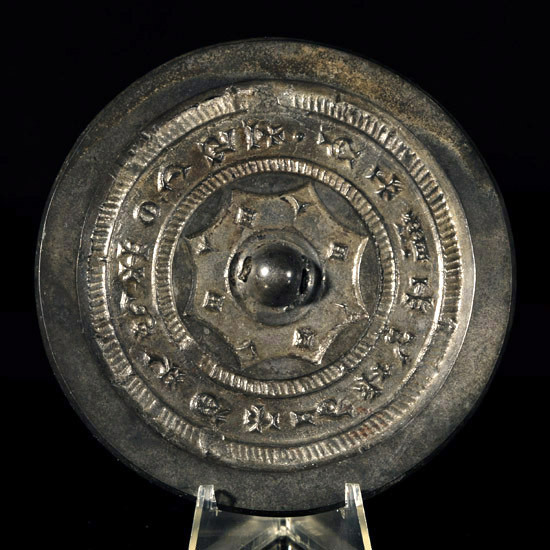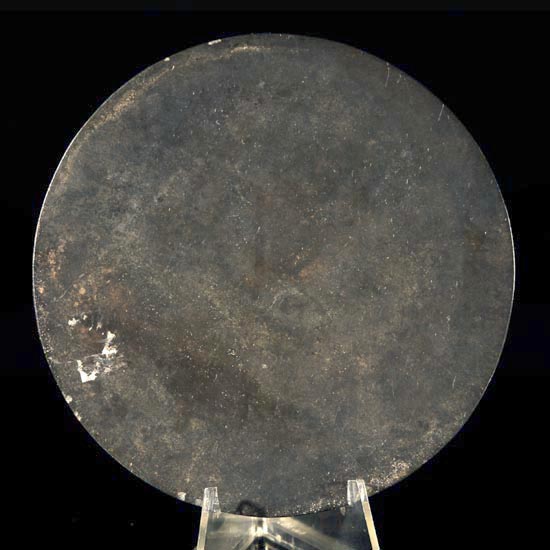|
Bronze Chinese Han
Dynasty Mirror (200 BC - 200 AD) The earliest
Chinese mirrors date to the Spring Autumn period however the Han
Dynasty produced some of the finest mirrors made of a very high tin
content white bronze that allowed the mirrors to be highly polished.
This mirror is of typical Han design with circular designs and
inscriptions on the back side. The front and the raised areas of the
back side are polished to an optical finish.
Details
Although the surface is
blackened and slightly corroded, it still retains its original optical
properties, as shown below where the image of a Thai-English
dictionary is
reflected in the mirror and the lettering appears reversed. Note, the
mirror surface
is fuzzy because it is not in focus.

These mirrors were sometimes
called "Chinese magic mirror" or "Tou Guang Jing 透光镜"
(literally "light-projection mirror"). Although the reflection of light
was already a bit magical, one of their amazing properties known at the
time was that when
light from the mirror face was projected onto a screen, the engravings
(at the back) could
be seen on the screen. This was amazing because the light was obviously
being projected from the front of the mirror.
The great Song dynasty Chinese Scientist Shen Kuo 沈括 once observed and studied why the back engravings were able to be projected from the mirror onto a wall. His explanation was that "although the writings/engravings were at the back, the mirror side has some traces or markings". Because the backside has engravings, it caused the mirror side to have an opposite micro-curvature effect, common in some bronze casting due to shrinkage during cooling. Although not easily seen with with the naked eye, the lengthy reflection on to the screen caused the micro-curvature to be further enlarged. The magic mirror highlighted the technology of ancient Chinese in making mirrors and their understanding of reflection principles of light.
http://img229.imageshack.us/i/zy694hanmirrorsix617rd.jpg/
http://www.chinahistoryforum.com/index.php?/topic/8153-han-dynasty-bronze-mirror/ http://www.christies.com/lotfinder/lot_details.aspx?intObjectID=5257989
|


